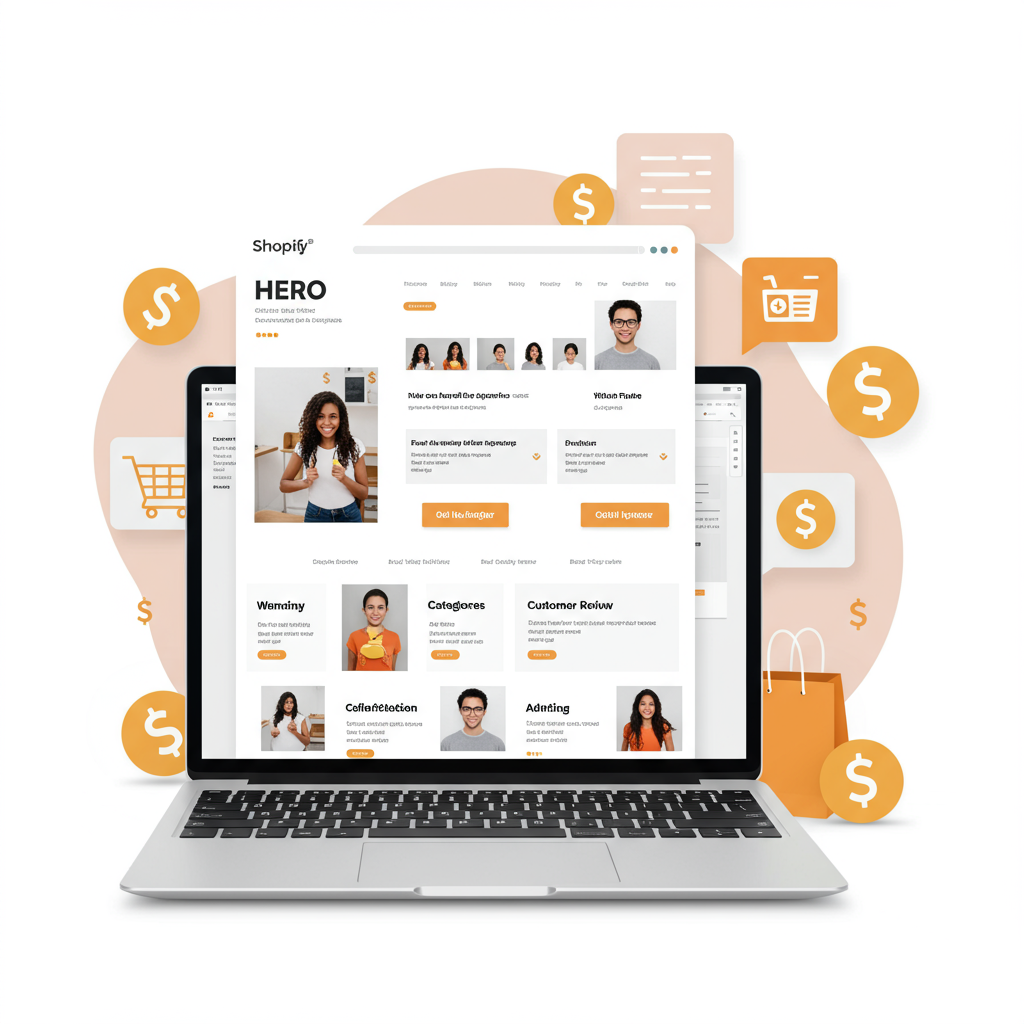Transform your Shopify store’s first impression into a powerful sales engine with these proven strategies.
As a Shopify merchant, you know your homepage is often the first impression customers have of your brand. It’s not just a digital storefront; it’s your most valuable piece of real estate, a critical gateway to conversions.
I’ve spent years observing and optimizing e-commerce sites, and I can tell you, a well-designed Shopify homepage isn’t just about aesthetics; it’s about guiding your visitors seamlessly towards a purchase.
My goal today is to walk you through the essential elements and strategies I’ve found most effective in transforming a static homepage into a dynamic conversion engine. Let’s dive into how you can make your Shopify homepage truly work for you.
**The Hero Section: Your Grand Entrance.** This is the first thing visitors see, and it needs to grab attention instantly. I always recommend a high-quality, visually stunning image or video that immediately conveys your brand’s essence and primary value proposition.
Your hero section should feature a clear, concise headline that states what you offer and why it matters. Below that, a compelling call-to-action (CTA) button, like “Shop Now” or “Discover Our Collection,” is absolutely crucial. Make it stand out!
**Intuitive Navigation: Don’t Make Them Think.** A confusing navigation menu is a conversion killer. I advise keeping your main menu simple, logical, and easy to understand. Use clear labels for categories like “Shop,” “Collections,” “About Us,” and “Contact.”
Consider implementing a search bar prominently. Many customers know exactly what they’re looking for, and a quick search function significantly improves their experience and your conversion rates.
**Showcase Your Best: Featured Products & Collections.** Your homepage is the perfect place to highlight your best-sellers, new arrivals, or seasonal collections. I suggest using attractive product imagery and concise descriptions to entice clicks.
Group related products into easily browsable collections. This helps visitors quickly find what they’re interested in, reducing friction and encouraging deeper exploration of your catalog.
**Build Trust with Social Proof.** In today’s online world, trust is paramount. I always tell merchants to prominently display customer reviews, testimonials, and trust badges (e.g., secure payment icons, money-back guarantees).
Consider integrating a live feed of recent purchases or a star rating system directly on your homepage. This subtle nudge can significantly influence purchasing decisions by showing that others are already enjoying your products.
**Your Unique Value Proposition: Why Choose You?** Beyond products, what makes your brand special? I encourage you to dedicate a section to clearly articulate your unique selling points. Is it sustainable sourcing, exceptional customer service, or unique craftsmanship?
This section could be a short “About Us” snippet or a series of icons representing your core values. It helps customers connect with your brand on a deeper level, fostering loyalty beyond a single transaction.
**Clear Calls to Action (CTAs): Guide the Way.** Every section of your homepage should ideally have a purpose and a clear CTA. Don’t just show products; tell visitors what to do next. “Learn More,” “Shop the Sale,” “Get Your Free Guide” – be explicit.
I find that using contrasting colors for CTA buttons makes them pop and draws the eye, increasing click-through rates. Ensure they are consistently branded but visually distinct.
**Capture Leads: The Email Signup.** An email list is one of your most valuable assets. I always recommend a prominent, yet non-intrusive, email signup form on your homepage, perhaps in the footer or as a subtle pop-up.
Offer an incentive for signing up, like a discount on their first purchase or exclusive access to new products. This makes the exchange of their email address worthwhile.
**Mobile Responsiveness: Design for Every Device.** A significant portion of online shopping now happens on mobile devices. I cannot stress enough the importance of a fully responsive Shopify theme.
Test your homepage on various screen sizes to ensure all elements are perfectly aligned, images load quickly, and navigation is intuitive on smaller screens. A poor mobile experience will drive customers away.
**Speed Optimization: Every Second Counts.** Page load speed directly impacts bounce rates and SEO. I advise optimizing your images (compress them!), minimizing app usage, and leveraging browser caching to ensure your homepage loads lightning-fast.
Use tools like Google PageSpeed Insights to identify areas for improvement. A fast-loading site provides a superior user experience and signals to search engines that your site is high quality.
**The Footer: Essential Information at a Glance.** While often overlooked, your footer is crucial. I recommend including links to your contact page, FAQs, shipping and return policies, privacy policy, and social media channels.
This section provides reassurance and easy access to important information, reducing customer service inquiries and building trust.
**A/B Testing and Analytics: Continuous Improvement.** Your work isn’t done once the homepage is live. I strongly advocate for continuous A/B testing of different headlines, CTAs, images, and section layouts.
Regularly review your Shopify analytics. Pay attention to bounce rates, time on page, and conversion rates for your homepage. These insights will tell you what’s working and what needs refinement.
**What do you think about this article?** I’m always eager to hear your thoughts and experiences.
By implementing these strategies, you’re not just building a beautiful homepage; you’re crafting a powerful sales tool that actively guides visitors through their journey, builds trust, and ultimately drives more conversions for your Shopify store.
Remember, your homepage is a living entity. It should evolve with your brand and your customers’ needs. Keep testing, keep optimizing, and watch your Shopify store thrive.






